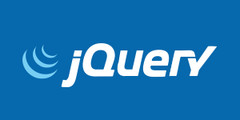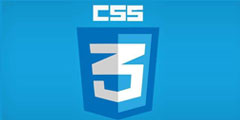Adding components into JPanel inside a JFrame(将组件添加到 JFrame 内的 JPanel)
问题描述
Since im a beginner and i don't want to get involved with the layout managers, i was simply adding a JPanel into my main JFrame and giving spesific location to each component in the panel. But somehow the output appears way too wrong..
frame = new JFrame(email + " (Offline)");
frame.setSize(400, 400);
frame.setLocation(0, 0);
frame.setDefaultCloseOperation(JFrame.DO_NOTHING_ON_CLOSE);
frame.setLayout(new FlowLayout());
frame.addWindowListener(new WindowAdapter()
{
public void windowClosing(WindowEvent e)
{
// out.println("BYE");
// out.flush();
frame.dispose();
thread.stop();
}
});
panel = new JPanel();
frame.add(panel);
chat = new JTextArea();
chat.setSize(400, 200);
chat.setLocation(0, 0);
chat.setEditable(false);
panel.add(chat);
panel.validate();
JLabel you = new JLabel("You:");
you.setSize(you.getPreferredSize());
you.setLocation(0, 210);
panel.add(you);
panel.validate();
input = new JTextArea();
input.setSize(200, 200);
input.setLocation(0, 220 + chat.getSize().height);
panel.add(input);
panel.validate();
send = new JButton("Send");
send.setSize(send.getPreferredSize());
send.setLocation(210, 220 + chat.getSize().height);
panel.add(send);
panel.validate();
frame.setVisible(true);
The outcome of this frame is that text areas are invisible, a You: label in the middle and next to the right of it the button.. What am i missing here?
Again, don't use null layout since it makes updating and maintaining your GUI much more difficult than it should be, and can lead to ugly GUI's if you plan on having them run on multiple platforms. Instead
- Use several JPanels, each one holding a core group of components and each using its best layout manager
- Nest these JPanels in other JPanels that use the best layout manager to display them
- and that will allow your GUI to be resizeable without need of extra code.
- Put your JTextAreas in JScrollPanes so that you can see all text even if it goes beyond the text area.
- Never set the size of the JTextArea as that will not allow it to scroll. Instead set its columns and rows.
As a very simple example, run this to see what I mean:
import java.awt.*;
import javax.swing.*;
public class FooSwing2 {
public static void main(String[] args) {
JTextArea chatArea = new JTextArea(8, 40);
chatArea.setEditable(false);
chatArea.setFocusable(false);
JScrollPane chatScroll = new JScrollPane(chatArea);
JPanel chatPanel = new JPanel(new BorderLayout());
chatPanel.add(new JLabel("Chat:", SwingConstants.LEFT), BorderLayout.PAGE_START);
chatPanel.add(chatScroll);
JTextField inputField = new JTextField(40);
JButton sendBtn = new JButton("Send");
JPanel inputPanel = new JPanel();
inputPanel.setLayout(new BoxLayout(inputPanel, BoxLayout.LINE_AXIS));
inputPanel.add(inputField);
inputPanel.add(sendBtn);
JPanel youLabelPanel = new JPanel(new FlowLayout(FlowLayout.LEFT, 0, 0));
youLabelPanel.add(new JLabel("You:"));
JPanel mainPanel = new JPanel();
mainPanel.setLayout(new BoxLayout(mainPanel, BoxLayout.PAGE_AXIS));
mainPanel.add(chatPanel);
mainPanel.add(Box.createVerticalStrut(10));
mainPanel.add(youLabelPanel);
mainPanel.add(inputPanel);
JFrame frame = new JFrame("Foo");
frame.setDefaultCloseOperation(JFrame.EXIT_ON_CLOSE);
frame.add(mainPanel);
frame.pack();
frame.setLocationRelativeTo(null);
frame.setVisible(true);
}
}
This would result in a simple (non-functioning) GUI that looked like this:
Now say you want to change this and add another button, an "exit" JButton to the right of the send JButton. If you used null layout, you'd have to resize your GUI, you'd have to move the send button over to the left and make sure that your math was without error, etc. If you used layout managers, you'd need just two new lines of code (to change the display, not the functionality of course):
JTextField inputField = new JTextField(40);
JButton sendBtn = new JButton("Send");
JButton exitBtn = new JButton("Exit"); // ***** added
JPanel inputPanel = new JPanel();
inputPanel.setLayout(new BoxLayout(inputPanel, BoxLayout.LINE_AXIS));
inputPanel.add(inputField);
inputPanel.add(sendBtn);
inputPanel.add(exitBtn); // ***** added
That's it, and this would display:
这篇关于将组件添加到 JFrame 内的 JPanel的文章就介绍到这了,希望我们推荐的答案对大家有所帮助,也希望大家多多支持编程学习网!
本文标题为:将组件添加到 JFrame 内的 JPanel


基础教程推荐
- 在 Java 中创建日期的正确方法是什么? 2022-01-01
- Java 实例变量在两个语句中声明和初始化 2022-01-01
- 从 python 访问 JVM 2022-01-01
- 不推荐使用 Api 注释的描述 2022-01-01
- 如何在 JFrame 中覆盖 windowsClosing 事件 2022-01-01
- 验证是否调用了所有 getter 方法 2022-01-01
- 大摇大摆的枚举 2022-01-01
- 多个组件的复杂布局 2022-01-01
- 如何在 Spring @Value 注解中正确指定默认值? 2022-01-01
- Java Swing计时器未清除 2022-01-01

















